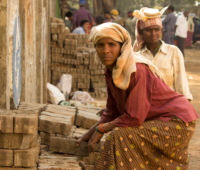Sheetal Chhabria’s contribution to “Layered Metropolis” illuminates the purposeful work that has been part of city-making in India—from colonial Bombay to present-day Mumbai. For over a century, distinctions of dwelling types, categories of laborers, and delineations of economic activity have been used to codify and recodify the political standing of space, in particular what is considered “urban.” Chhabria’s example of Bombay/Mumbai illustrates how language and official (and unofficial) categorizations have served the interests of certain institutions and groups within India’s spatial governance and that supposed “crises of urbanism” are part of a much larger context of racial capitalism across the cities of the world.














